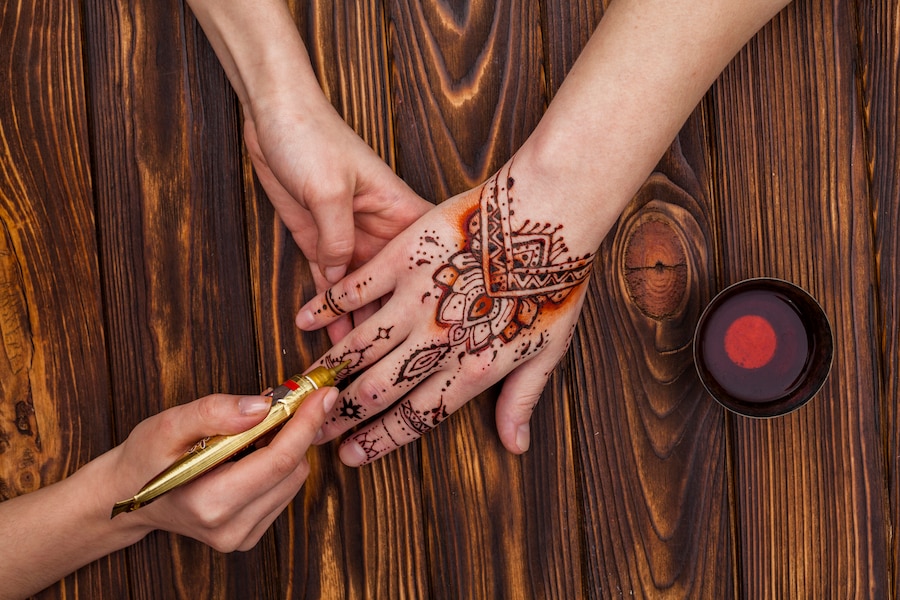Henna art, also known as mehndi, is a traditional form of body art that has been practiced for centuries in many cultures around the world. The practice involves applying a paste made from the crushed leaves of the henna plant to the skin in intricate designs. Henna art is often used to decorate the hands and feet for weddings, festivals, and other special occasions.
The History of Henna Art
The use of henna for body art dates back to ancient Egypt and India, where it was used for religious and ceremonial purposes. Over time, the practice spread throughout the Middle East, North Africa, and South Asia, where it became an important part of wedding and festival celebrations.
In India, henna art is known as mehndi, and it is often used to decorate the hands and feet of brides before their wedding day. The designs are intricate and can take hours to complete, but they are believed to bring good luck and prosperity to the newlyweds.
The henna plant itself is also revered in many cultures for its medicinal properties. It is believed to have cooling and soothing properties that can help to alleviate a variety of ailments, including headaches, fever, and skin rashes.
The Art of Henna Design
Henna art is a delicate and intricate form of body art that requires skill and patience to master. The paste is applied to the skin using a small cone or brush, and the design is created by carefully drawing lines and shapes onto the skin. The paste is left to dry for several hours, during which time the color of the design will deepen.
Once the paste is dry, it is scraped off the skin, revealing the henna design underneath. The color of the design will continue to deepen over the next few days, before eventually fading away.
Henna designs can be simple or complex, depending on the skill of the artist and the preferences of the person receiving the henna. Traditional henna designs often include floral and paisley motifs, as well as intricate geometric patterns.
Modern henna art has also evolved to include more contemporary designs, such as animals, words, and abstract shapes. Henna tattoos are becoming increasingly popular among people of all ages, and they are often used as a temporary form of body art.
The Benefits of Henna Art
Henna art is a beautiful and unique form of body art that has many benefits. For one, it is a non-permanent form of body art, which means that it can be easily removed if desired. This makes it a great option for people who want to experiment with different designs without committing to a permanent tattoo.
Henna is also a natural and safe material to use on the skin, as long as it is made from pure henna leaves and not mixed with harmful chemicals. It is a great option for people who are allergic to traditional tattoo ink, as well as those who want to avoid the pain and discomfort associated with getting a tattoo.
In addition to its aesthetic benefits, henna also has medicinal properties that can benefit the skin. It is believed to have a cooling and soothing effect on the skin, which can help to alleviate inflammation and irritation.
Conclusion
Henna art is a beautiful and ancient form of body art that has stood the test of time. Its intricate designs and natural materials make it a safe and unique option for people who want to experiment with body art. Whether you’re looking to adorn your hands and feet for a special occasion, or you simply want to try out a new design, henna art is a great option that is sure to leave you feeling beautiful and inspired.

